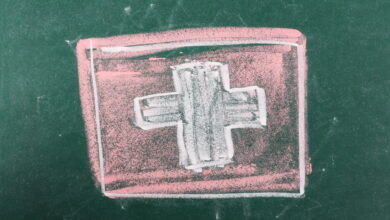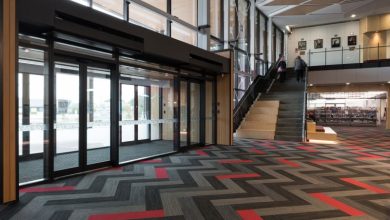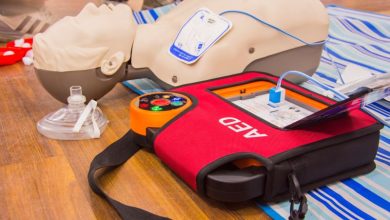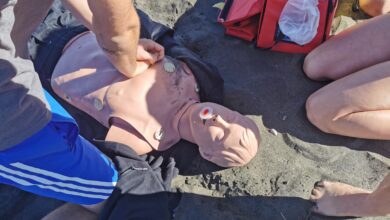Making your school safer with first aid training for all
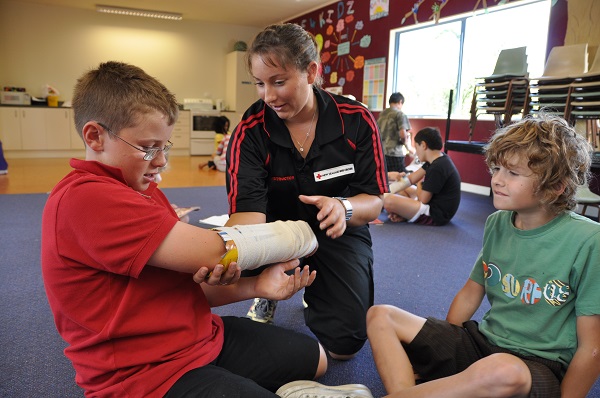
Anyone in a school can be a first aider – even the youngest pupil. School News looks at how to prepare your staff and students to deliver first aid, and why careful planning can make the difference between a life lost and a life saved.
Simple accidents, such as slips or trips, might seem a trivial part of the day-to-day hustle and bustle of school life, but they are capable of causing serious injuries and worse. The question therefore is not whether accidents or medical emergencies will happen, but how well prepared your school is to cope. Good planning, even simple procedures such as ensuring the first aid supplies are properly maintained, can significantly reduce risk. If all staff and students can perform basic first aid, your school is in a strong position to keep everyone safe.
And, as Worksafe New Zealand points out, schools are required to do more than protect children and young people, teachers and other school staff have the same right to a healthy and safe work environment as the people using their services. Including first aid training in your workplace health and safety program helps you meet your obligations and show employees that you care about their well-being.
First Aid
It is very empowering for children to learn to take responsibility for their own health and well-being and to be able to help others, and it will serve them well whether at school, home or away at camp. Even pre-schoolers can be taught to provide life-saving help; they can dial 111 for help, for example, and some are able to assist emergency personnel by relaying their home address.
School age children can learn to take responsibility for their own health and well-being, and how to care for others. With first aid training, they can learn how to respond to an emergency, what to do in the event of a disaster, and ways to prevent injuries. They can learn to spot danger such as a younger child walking towards a road, how to help someone who is very upset, and what to do when someone who is hurt. Most importantly, they can learn where to get help.
Today, there are apps and free online resources to help teachers train their students, and schools can also arrange for specialist first aid trainers to come in to work with pupils. First aid training supports the New Zealand curriculum particularly in health and PE, science and social science.
Look for courses that are aligned to the New Zealand curriculum and which cover the basics of managing an incident.
Secondary school
At high school, students can take their first aid skills to the next level. Most students will be physically capable of performing cardiopulmonary resuscitation (CPR), and senior students can access a Gateway programme to be workplace-ready with first aid knowledge, a valuable skill for a school leaver.
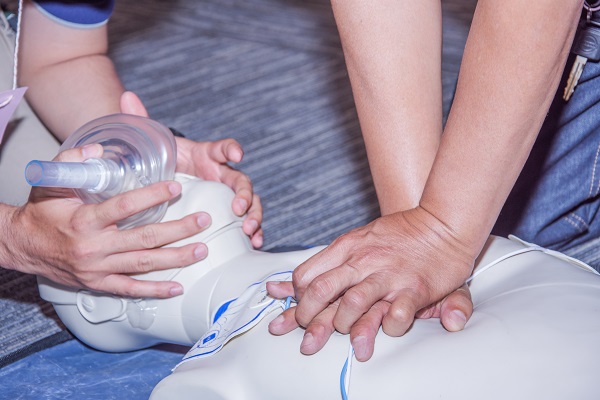
Other training available to teenagers is the personal safety course, Save a Mate, delivered by the Red Cross. This is designed to empower students to look after themselves and their friends when they in an environment with alcohol and drugs. This course is especially popular during the school ball season.
For staff
Anyone working with children would be wise to be equipped with first aid know how. In a school, the nominated first aiders are required to ensure that the school has adequate first aid resources, keep their qualifications up to date, and provide immediate assistance to anyone who has suffered an injury or illness while at work.
There are many providers who deliver first aid training to school staff; look for one that covers the basics of:
- resuscitation and choking bleeding, shock, fractures, sprains and head injuries
- hypothermia, burns and poisoning
- medical emergencies, including asthma, diabetes and epilepsy
- CPR (cardiopulmonary resuscitation)
- severe allergic reactions
For boards of trustees
The overall responsibility for health and safety in a school falls to the board of trustees (BOT). With regards to first aid, this means ensuring that:
- first aid supplies are provided for persons injured at a school;
- first aid supplies are kept clean and tidy and accessible for the treatment of injured persons;
- first aid supplies are replenished at regular intervals;
- first aid supplies are available to be given without delay to anyone requiring it at the school.
- all school staff are aware of the location of first aid supplies.
According to MOE guidelines, first aid supplies must be clearly marked, and kept in dustproof boxes or cabinets (or the school’s dedicated first aid room) in well-lit areas.
First aid supplies
The exact amounts of first aid supplies that a school is required to stock vary according to the size of the school, but include:
- roller bandages (including crepe bandages 50 mm and 75 mm sizes)
- sterile dressings (75 mm x 75 mm packets)
- adhesive wound dressing strip (100 mm packets)
- waterproof adhesive plaster (50 mm wide reels)
- sterile, non-adhesive pads (100 mm x 100 mm packets)
- sterile eye pads
- container for use in pouring water over the eye (e.g. plastic squeeze bottle)
- receptacle for soiled dressings (e.g. bucket with foot-operated lid)
- antiseptic liquid approved by the Medical Officer of Health
- safety pins
- scissors – surgical or equivalent stainless steel (pair)
- splinter forceps, fine point – stainless steel
- accident register and pen or pencil
- first aid booklet (issued by the Departments of Labour and Health or Red Cross/Order of St. John)
- a list of local emergency numbers
- disposable gloves – large size or multi fitting (pairs)
Essential health & safety for school and the workforce
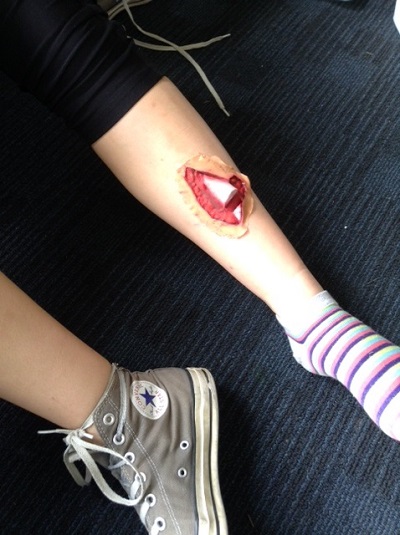
ProMed is a multi-disciplinary medical and safety business servicing many large businesses in New Zealand and Australia. It provides accredited workplace health, safety and emergency medical training and allied services.
Currently, ProMed works with approximately 200 high schools throughout New Zealand, teaching First Aid and Health & Safety to Gateway students, and also to teachers.
Spokeswoman Jocelyn Gutsell says teachers need to understand how their responsibilities have changed since the introduction of the Health & Safety at Work Act (2015), and the responsibilities of the school and boards of trustees.
“First aid is a must for all students. Most accidents and medical events happen at home or with friends. It’s also valuable to learn these skills while at school and for any jobs they hold and those they wish to go in to.
Knowledge of H&S for the work force is also extremely helpful. “Employers can take them on with the knowledge that they have basic H&S skills.
Fundamental first aid for teachers and students
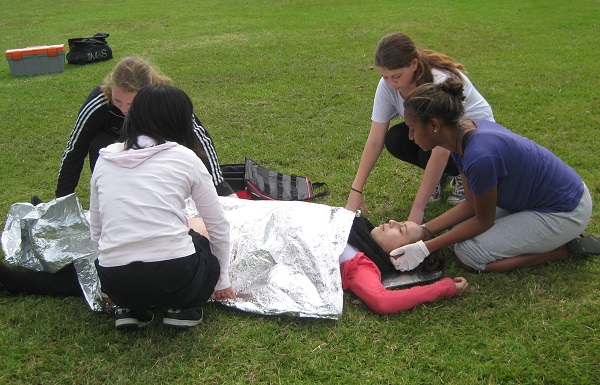
“Equipped for Life” is our by-line and we believe all teachers and students should have access some first aid training.
First Training provides courses in first aid education to students and teachers in a range of destinations throughout New Zealand. They are a registered PTE with NZQA and have been operating for more than 15 years.
“We specialise in four-hour FASE (first aid for the school environment) courses for teachers covering the basics in dealing with accidents or incidents in the classroom, playground or in EOTC activities,” says managing director Jo Verheijen.
Other courses include level one Workplace First Aid to Pre-Hospital Emergency Care, all of which cover the basics of accident management, CPR, choking, bleeding, severe allergic reactions, medical conditions and injuries that are common in schools.
“We run courses at a time to suit your group during school term or holidays or weekends,” says Ms Verheijen.
First Training also deliver workplace first aid courses to students in years 11 , 12 and 13 which can earn them NCEA credits.
Learning how to manage a crisis
New Zealand Red Cross | Ripeka Whero Aotearoa works with hundreds of schools throughout the country each year teaching first aid. Courses include People Savers for pupils aged eight to 11, first aid for high schoolers and education professionals, and a peer support course for teenagers.
People Savers is aligned to the New Zealand curriculum, and introduces students to and familiarises them with hands-on first aid. A total of four hours’ instruction is provided, and schools can elect whether to have it delivered in one block or smaller chunks.
By 14, most students are physically able to deliver cardiopulmonary resuscitation (CPR) and can enrol for a public education first aid course, the same training available to school staff.
Save a Mate is designed to equip secondary school students with the knowledge and confidence to prevent, recognise and respond to alcohol and drug-related emergencies. The 90-minute course aims to build young people’s resilience and recognise harmful behaviours.
People Savers and Save a Mate courses are free to schools, thanks to donations made throughout the year to New Zealand Red Cross.



